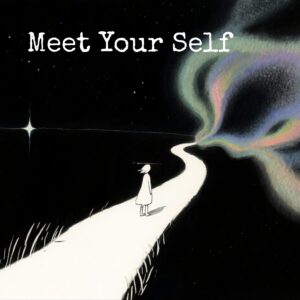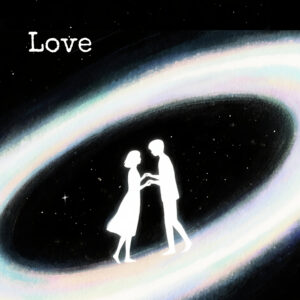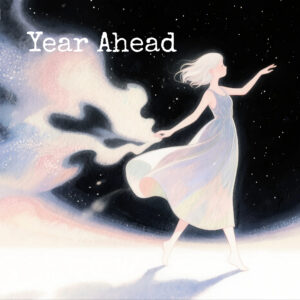La rencontre des profondeurs et du cosmos
Au début du XXe siècle, lorsque la psychologie a cherché à explorer les couches cachées de l'esprit, Carl Gustav Jung (1875–1961) a osé regarder au-delà du cerveau humain et dans le l'univers lui-même.
Un psychiatre suisse et le fondateur de psychologie analytiqueJung considérait la psyché comme un reflet de l'ordre cosmique.
Pour lui, l'astrologie n'était pas une superstition, c'était une science symbolique, un langage d'archétypes à travers lequel l'inconscient exprime ses schémas.
Il a écrit :
« Nous naissons à un moment précis, dans un lieu précis, et, comme les grands millésimes du vin, nous portons les qualités de l’année et de la saison de notre naissance. »
En une seule phrase, Jung a uni psychologie et astrologie, transformant les étoiles en miroirs de l'âme humaine.
La révolution psychologique
Jung a commencé sa carrière comme collaborateur de Sigmund Freud, contribuant à établir la psychanalyse.
Mais tandis que Freud explorait l'inconscient personnel — les pulsions, les refoulements et les traumatismes précoces —, Jung s'aventurait plus profondément dans ce qu'il appelait le inconscient collectif: le réservoir commun de mythes, de symboles et d'archétypes qui façonnent toute l'expérience humaine.
C’est là que se trouvait le pont vers l’astrologie. Jung comprit que les configurations planétaires et les dieux mythologiques représentaient la même chose. forces universelles actif dans la psyché.
Les planètes, à l'instar des archétypes, n'étaient pas des causes externes, mais images intérieures projetées sur le ciel—reflets de l'ordre psychique rendus visibles sous forme cosmique.
Archétypes et planètes
La théorie de Jung archétypes a donné à l'astrologie un fondement psychologique profond.
Chaque planète pourrait être comprise comme l'expression d'un principe archétypal :
Soleil — le Soi, source de vitalité et de raison d'être.
Lune — la Mère, l'émotion et l'instinct.
Mercure — le Farceur, l'esprit en mouvement.
Vénus — L'Amant, la beauté et l'union.
Mars — le guerrier, la détermination et le désir.
Jupiter — le Sage, la foi et l'expansion.
Saturne — le Père, la discipline et le temps.
Dans ce modèle, un thème natal n'était plus une carte du destin, mais un mandala de la psyché, un schéma illustrant comment la conscience individuelle participe à des schémas universaux.
L'approche de Jung a conféré à l'astrologie une légitimité psychologique : ce n'était pas un système de prédiction, mais un langage de corrélation symbolique entre les réalités intérieures et extérieures.
Synchronicité : le pont entre la psyché et le cosmos
Le concept le plus révolutionnaire de Jung était peut-être… synchronicité— l’idée que des coïncidences significatives relient le monde intérieur de la psyché aux événements extérieurs.
Il a proposé que l'univers ne soit pas seulement causal, mais acausal—classés par signification autant que par mécanisme.
L'astrologie, affirmait-il, est une manifestation de synchronicité: lorsque les configurations planétaires à un moment donné correspondent de manière significative à des états psychologiques ou à des événements de la vie.
Dans une lettre de 1952 adressée à l'astrologue Dr. BV RamanJung a écrit :
« L’astrologie représente la somme de toutes les connaissances psychologiques de l’Antiquité. »
Par synchronicité, il a fourni le premier cadre philosophique qui a permis à l'astrologie de coexister avec la science moderne, non pas comme une superstition, mais comme un reflet de la structure profonde de la réalité elle-même.
Expérimentation et observation
Contrairement aux mystiques précédents, Jung a abordé l'astrologie de manière empirique.
Il a mené des études statistiques sur relations conjugales et aspects planétaires, découvrant des corrélations intrigantes entre certaines configurations et la compatibilité psychologique.
Bien que ses résultats n'aient jamais été concluants, ils reflétaient sa conviction que l'astrologie indiquait une direction. modèle objectif d'ordre psychique dans le cosmos.
Il considérait l'astrologie comme un outil vivant en psychothérapie, utilisant les horoscopes comme aides symboliques pour explorer l'identité, le destin et la transformation.
L'astrologie de Jung en pratique
Jung n'utilisait pas l'astrologie pour prédire, mais pour éclairer le processus psychologique.
En thérapie, il pouvait étudier le thème astral d'un client comme une carte symbolique de ses tensions et potentiels intérieurs, l'aidant à reconnaître quels archétypes cherchaient à s'exprimer ou à trouver un équilibre.
Il a écrit :
« L’astrologie est assurée d’être reconnue par la psychologie, sans autres restrictions, car elle représente la somme de toute l’expérience psychologique de l’Antiquité. »
En ce sens, l'astrologie est devenue une partie de La psychologie alchimique de Jung— un processus d’individuation, par lequel l’âme intègre ses contraires et devient entière.
Héritage : De Jung à l'astrologie archétypale
L'œuvre de Jung a posé les fondements intellectuels et spirituels de Astrologie archétypale et psychologique, développé ultérieurement par Dane Rudhyar, Liz Greene, et Richard Tarnas.
Ils ont étendu son intuition selon laquelle les planètes symbolisent le archétypes vivants de la psyché et que les cycles astrologiques reflètent le déploiement de la conscience collective et individuelle.
Aujourd'hui, la vision de Jung permet à l'astrologie de se considérer non comme une pseudoscience, mais comme une science à part entière. symbolisme de la profondeur— un langage de l'âme et du cosmos qui fait le lien entre la sagesse antique et la psychologie moderne.
Le psychologue des stars
Carl Jung a transformé l'astrologie d'un art prédictif en une révélation psychologique.
Il a démontré que les mêmes schémas archétypaux qui animent les planètes animent aussi le cœur humain, et qu'en étudiant ces correspondances, nous découvrons non pas le destin, mais le sens.
Pour Jung, connaître son thème astral revenait à connaître le mythe que l'on vit—pour comprendre que les cieux ne sont pas au-dessus de nous, mais en nous.
Dans sa cosmologie, l'univers n'est pas un mécanisme indifférent mais un miroir de l'esprit, reflétant sans cesse l'intelligence créatrice qui anime les étoiles et les âmes.



